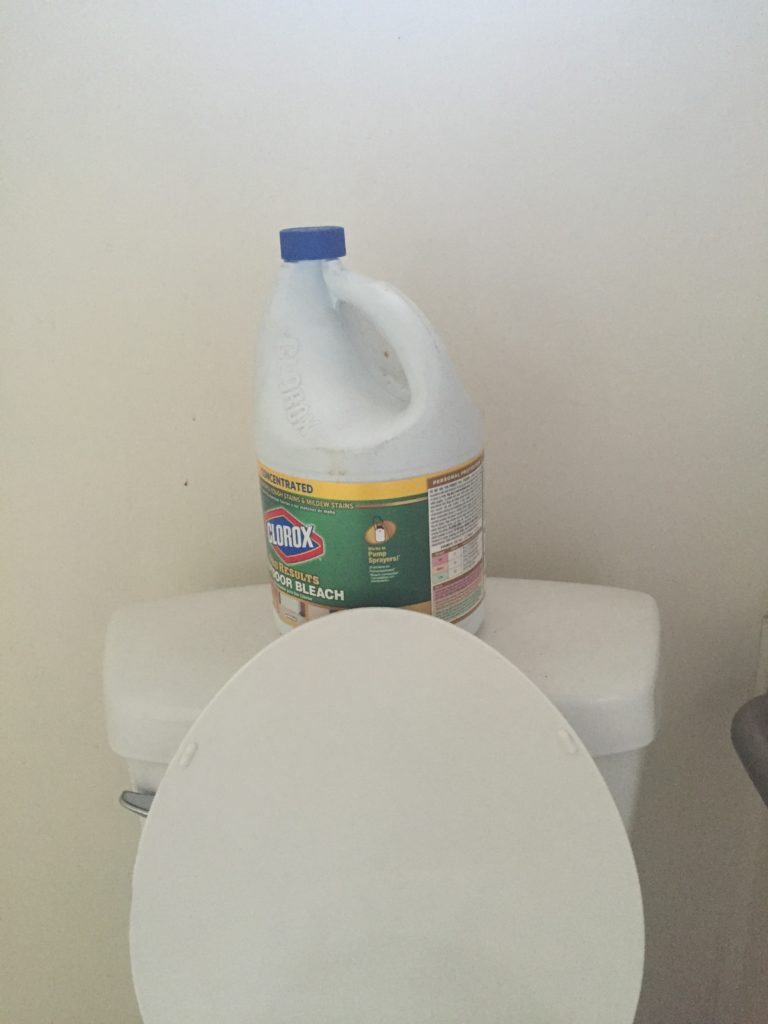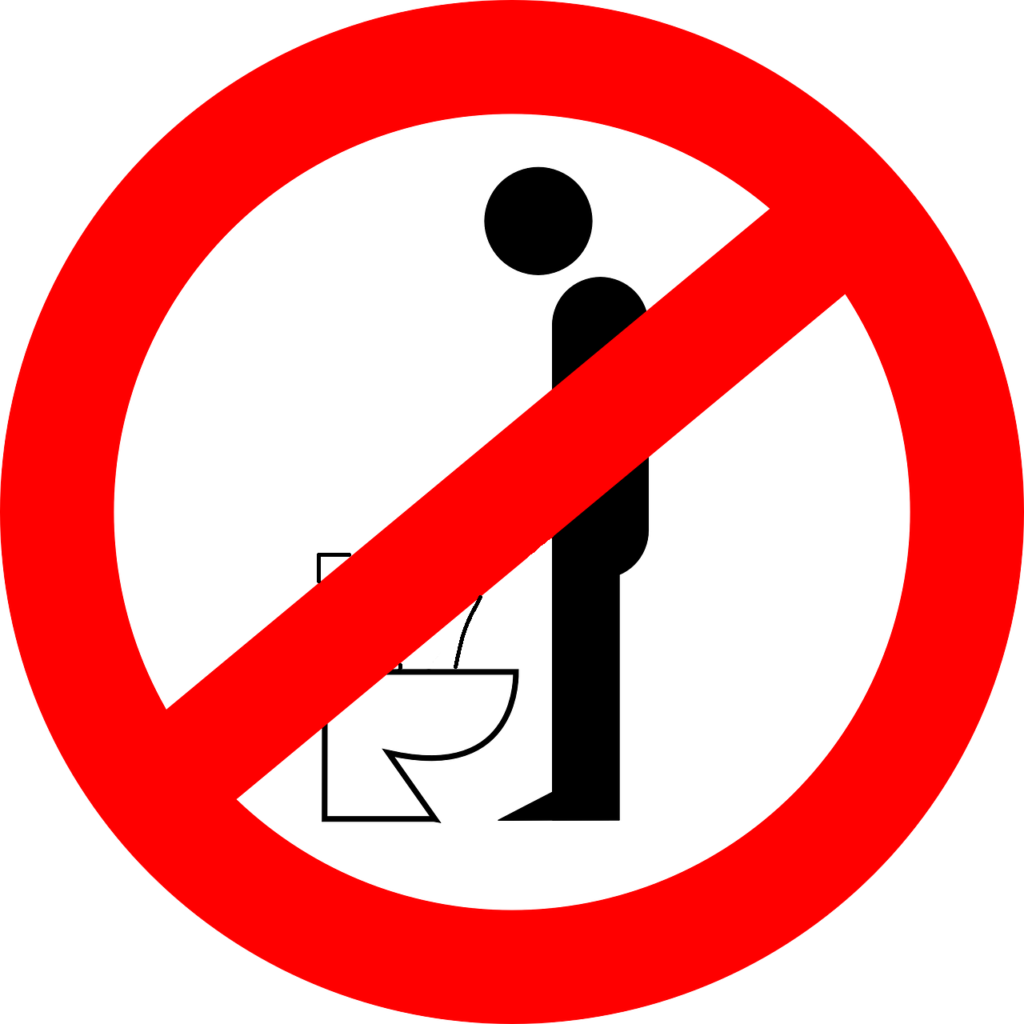Bleach and PVC Overview
As you probably know, PVC pipe has great chemical resistance properties – but how do bleach and PVC hold up when used to clean? Before being used in plumbing, pipe goes through “thermosetting,” a hardening process that allows PVC to stand up to harsh chemicals. One chemical in particular to which PVC is resistant is sodium hypochlorite, more commonly known as bleach. It’s important to note that not all bleaches are sodium hypochlorite, but for the purposes of this article, any reference to bleach (the common liquid cleaning agent found in households) will refer to sodium hypochlorite.

Bleach is an amazingly versatile disinfectant that is great for sanitizing many surfaces, including the bathroom. Bleach is actually nothing more than salt water that has been altered through electrolysis. The commercial form of bleach is a broad-spectrum disinfectant that kills off microbes on a molecular level. Bleach also breaks the chemical bonds found in chromophores, which are light-absorbing molecules that cause color. Ever wondered why pure bleach will turn your clothing white? It lacks any color because it destroys any molecules that absorb light, which is why bleach is an ideal stain remover on white clothing or impermeable surfaces, such as toilets!
The bleach companies make a variety of products for cleaning toilets, but honestly you can simply use diluted bleach to clean your entire bathroom. No need for the wands, the powder bombs, or toilet cleaners.
If you do decide to clean a toilet with bleach, you can pour as much as a half cup of bleach into clean water (make sure to flush before doing so) and allow it to sit for 30 minutes to let it work its magic. It will not harm your plumbing, especially after being diluted from the toilet water. For stubborn stains, use a pumice stone. You can read more about cleaning toilets here.
When using bleach to clean surfaces, including exposed PVC pipes, it’s always a good idea to use a diluted mixture of 1:2 or 1:4 ratio of bleach to water. Undiluted bleach is overkill and will only create excessive fumes that you really don’t need to inhale.
There is a common misconception that bleach will clear clogged drains. Bleach is great as a disinfectant but it will not dissolve the most common reasons for blockages – hair, feminine hygiene products, mineral build-up, etc. Instead of wasting time and money on chemical products to clear drains, you are much better served investing in a toilet auger when a good plunger fails to do the job. Skip the bleach, not because it will harm your PVC, but because you are wasting your time.
On a side note, there are some chemicals that absolutely must be avoided when cleaning toilet bowls or you risk damaging your pipes. Those include acetone or nail polish remover, or even PVC pipe cleaner. Hopefully, for numerous reasons, you aren’t pouring any chemicals down your toilet except for those made specifically for cleaning.
A Word of Caution

Bleach can have severe adverse reactions with other chemicals. The “chlorite” in sodium hypochlorite means chlorine is a major component of bleach, and certain chemicals, when mixed with bleach, react to release chlorine gas. Chlorine gas is highly toxic and a dangerous inhalation hazard. Two other very common cleaning compounds that can cause chlorine gas when mixed with bleach are ammonia and vinegar. For this reason, do NOT mix cleaning compounds, ever. If you need to use multiple cleaning products to take care of a surface, do multiple iterations with a water rinse between products.
Also, note that urea also has a terrible reaction with bleach. If you are going to clean the inside of your toilet bowl, make sure your flush prior to cleaning and to flush again after you are done. That would be a pretty awful way to go…
Another Word of Caution
Some newer models of toilets come glazed, creating an ultra-smooth surface on and inside of your toilet. Some of these glazes can be damaged with concentrated bleach, so make sure to read your cleaning instructions if you have such coatings to the ceramic. Theoretically, this glaze prevents staining, mineral build up and mold in your toilet so you should never feel compelled to use bleach for cleaning. Just use your brain and know what works for you and your toilet.
Bottom line: It is safe to use bleach on PVC, inside and out. There are just certain precautions that need to be made with cleaning your bathrooms, kitchens or other areas with plumbing systems.
Check out our posts on How to Properly Clean a Toilet and How to Resurrect a Neglected Toilet.
I rattling lucky to find this web site on bing,
just what I was looking for 😀 likewise saved to fav.
Can bleach dissolve hair inside the drain?
My husband used half bleach and half water solution sprayed in the shower on the walls and it’s floor. We let set over night and he rinsed and cleaned it the next day. When we took our showers the next day we had lots of water in the room directly below the bathroom that he cleaned. Did we destroy the PVC drain pipes? Now we have to tear up the floor tile in that bathroom to find the problem. The water in the room below, and there was a lot of it, came through the ceiling about 6 feet away from where the shower drain upstairs would be above. Did we create the problem using the bleach?